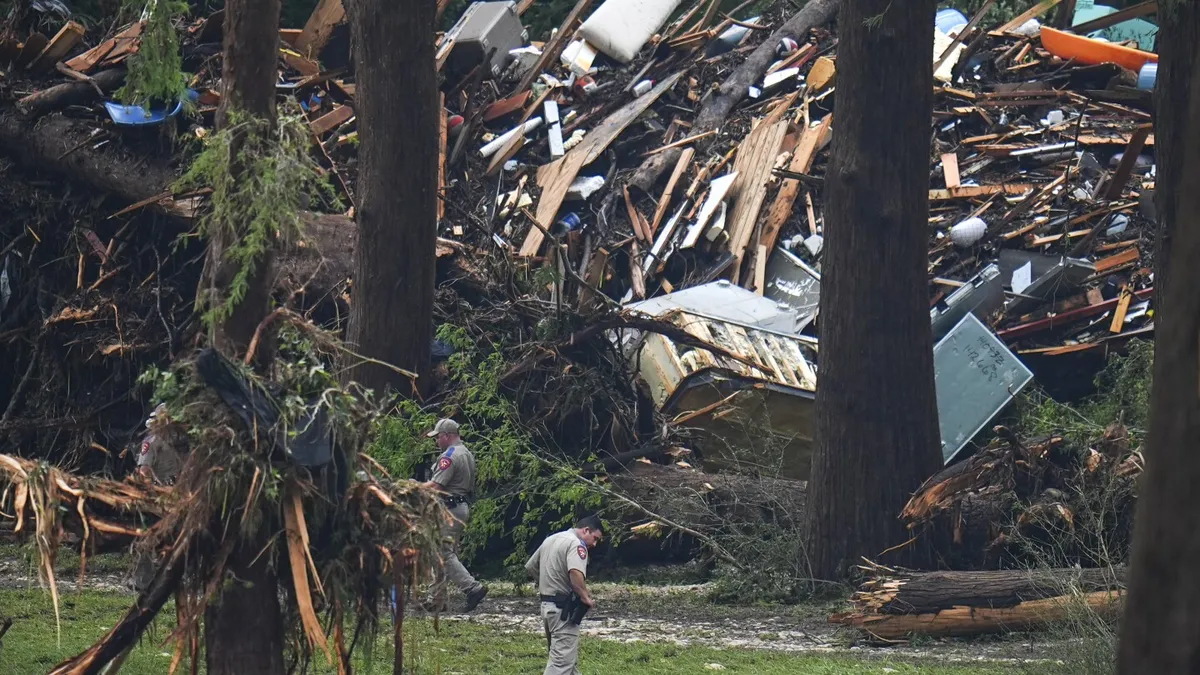
WASHINGTON (AP) — The recent catastrophic flooding in central Texas has reignited discussions about our preparedness for extreme weather events. In 1987, many believed they had developed resilience against nature's worst, yet this month’s devastating flash floods, which claimed over 100 lives, have proven otherwise. Historically, regions like the typically temperate Pacific Northwest and western Canada were not associated with extreme weather events, such as heatwaves. However, climate change has altered this perception, as evidenced by recent events in tropical Hawaii and inland North Carolina, where drought-driven wildfires and hurricane remnants, respectively, have left their marks.
Climate change is increasingly making extreme weather events more frequent and severe, according to climate scientists and government data. Experts in meteorology, disaster response, and public health have emphasized that society is often stuck in outdated thinking, failing to recognize that extreme weather has become the new norm. Princeton University climate scientist Michael Oppenheimer stated, “What happens with climate change is that what used to be extreme becomes average, typical, and what used to never occur in a human lifetime or maybe even in a thousand years becomes the new extreme.”
According to the National Oceanic and Atmospheric Administration (NOAA), the 10-year summer average of their climate extreme index, which tracks hurricanes, heavy rainfall, droughts, and temperature fluctuations, has increased by 58% since the 1980s. Despite this alarming trend, Oppenheimer believes society is not responding with the urgency that the situation demands, likening the inaction to standing on train tracks as a locomotive approaches. “There’s plenty of evidence that we sit there and do absolutely nothing while these risks are coming right at us,” he warned.
While the changing climate is a critical issue, the way society reacts—or fails to react—can exacerbate these challenges. Marshall Shepherd, a meteorology professor at the University of Georgia and former president of the American Meteorological Society, highlighted that many individuals base their decisions on past experiences with extreme weather, often leading to a false sense of security. For instance, despite the historical frequency of flooding in Texas, many residents expressed disbelief that such severe storms could occur again, showcasing a dangerous normalcy bias.
Experts like Kim Klockow McClain, an extreme weather social scientist, argue that it is essential for people to reconsider their understanding of disaster preparedness, even in areas not typically known for severe weather. “The message needs to be, if you’re used to some degree of nuisance flooding, look at what happened in Texas and realize that this is a shifting baseline,” she stated, urging a reevaluation of risk perception.
After catastrophic storms and wildfires, many individuals impacted often express disbelief that such events could happen to them. This mindset can prevent adequate preparedness, as noted by Susan Cutter, co-director of the Hazards Vulnerability & Resilience Institute at the University of South Carolina. “It’s sort of a psychological mechanism to protect us that it can’t happen to me,” she observed. Lori Peek, director of the Natural Hazards Center at the University of Colorado, echoed this sentiment, emphasizing the risks associated with overconfidence borne from surviving past extreme events.
As the frequency and intensity of extreme weather continue to rise, our ability to prepare and respond is not keeping up. Aging infrastructure is becoming increasingly vulnerable, especially as more populations inhabit hazardous areas, such as coastal regions. Experts have raised concerns over the Trump Administration's budget cuts to essential agencies like the Federal Emergency Management Agency (FEMA), the National Weather Service, and NOAA. These cuts threaten to undermine our preparedness and response capabilities.
“We’re destroying the capability we have that we’re going to need more and more in the future,” Oppenheimer warned. To effectively navigate future disasters, society must shift its focus from historical patterns to worst-case scenarios. “This is our future,” Peek stated, emphasizing the need for proactive planning in a world where the occurrence of more fires, floods, and heatwaves is becoming increasingly inevitable.